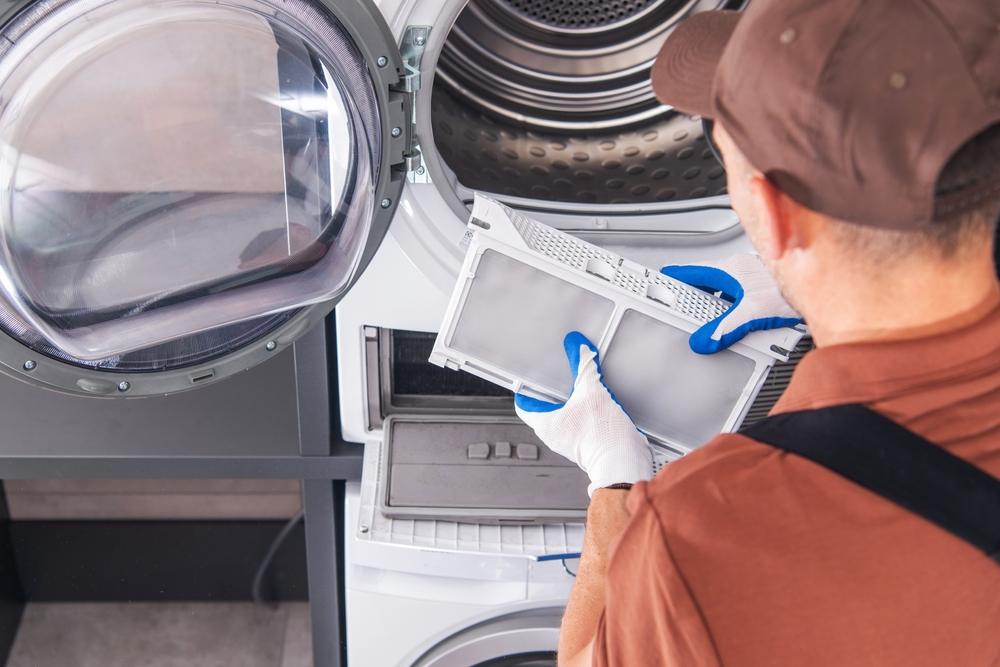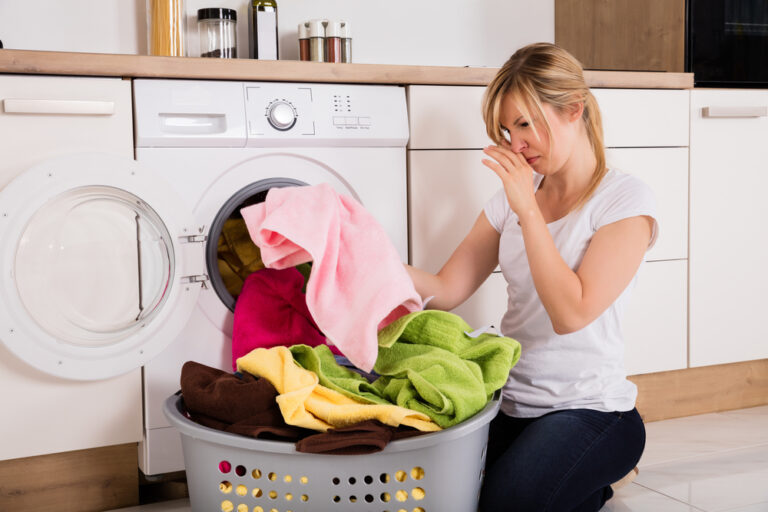
Leaking Washer in Milwaukee? Here’s Why and How to Fix It Fast
A leaking washer turns laundry day into floor-mopping duty and can damage flooring and trim. In Milwaukee, leaks show up more in spring thaw and humid summers, when hoses age faster and basements see temperature swings. The good news: most leaks come from a short list of causes. A quick check can save time, money, and a second load of towels.

This guide explains the common sources of washer leaks, what a homeowner can safely check, when to stop and call for Milwaukee washer repair, and how Unique Repair Services, Inc. tackles these jobs across Milwaukee, Shorewood, Wauwatosa, Bay View, and the North Shore.
First, locate where the water shows up
A leak at the front, back, or underneath points to different causes. Puddles under the door on a front-load unit suggest a door-seal issue. Water dripping down the back panel hints at hose or valve trouble. A steady pool under the middle of the machine often traces to the drain pump, tub-to-pump hose, or a cracked tub.
If the machine only leaks during fill, suspect the inlet hoses, water valve, or detergent drawer. If it leaks during drain or spin, look at the drain hose, standpipe, or pump. If it leaks all the time, including while off, an inlet valve may be stuck open.
The fastest homeowner checks to do right now
A few simple steps solve many leaks without tools. Shut off power if needed and turn off the water supply if a hose looks compromised. Keep a towel close.
- Check hose connections at the back of the washer. Hand-tighten the hot and cold hoses to the ports and to the wall valves. Replace any flattened or cracked rubber washers inside the hose couplers.
- Inspect the drain hose. Make sure it is seated in the standpipe at least 6 inches but no more than 8 to 12 inches, with a proper U-shaped hook. If it is jammed too deep, it can siphon and overflow. If it is too loose, it can pop out during spin.
- Open and clean the detergent drawer. Sludge from concentrated detergent and softener causes drawer overflow. Rinse it in warm water, wipe the cavity, and run a small rinse cycle.
- Level the washer. Uneven legs cause vibration that loosens clamps and can push water past seals. Use a bubble level and adjust the front feet so the tub sits stable corner to corner.
- Use the right detergent and dose. High-efficiency machines need HE detergent. Too much soap creates excess suds that push through vents and door gaskets. Measure for load size and Milwaukee’s typically medium to hard water.
If the leak stops after these checks, run two small test loads and watch for drips at the back and underneath. If water still appears, the cause is likely internal.
The usual suspects in Milwaukee homes
Milwaukee’s housing stock ranges from classic East Side duplexes to new builds in Franklin and Oak Creek. Older basements often have tall standpipes and long drain runs. Hard water is common across the metro area. Both factors influence leaks.

Door boot gasket on front-loaders: Hair, pet fur, coins, and bobby pins lodge under the lip. A small tear becomes a steady drip. If there is black residue or mold, the gasket may not seal well. Small tears sometimes hold with a temporary patch, but replacement Milwaukee washer repair cost Unique Repair Services, Inc. is the lasting fix.
Inlet hoses and valves: Rubber hoses harden and bulge near the ferrules. Stainless braided hoses reduce risk, but the internal rubber still ages. A cold Milwaukee basement accelerates cracking. If one hose weeps, replace both. If water trickles into the tub when the washer is off, the inlet valve is leaking internally.
Drain pump and tub-to-pump hose: Lint, bra wires, and coins chew the impeller or pierce the hose. This shows up as a leak during drain or final spin. A grinding sound is a strong clue the pump is failing.
Outer tub seam or tub bearings: On some high-mileage top-loaders, the tub seal leaks and throws water during spin. Rust trails underneath and a musty smell often accompany this problem. This repair is more involved and can overlap with bearing replacement.
Detergent dispenser and fill funnel: On certain models, water flows through a channel into the tub. If that channel clogs with residue, water spills down the front panel. Regular cleaning prevents it, but once warped, the drawer housing needs replacement.
Clogged standpipe or slow household drain: The washer may be fine. If the standpipe backs up, it looks like a washer leak. Watch during the drain cycle. If water rises and spills from the pipe, the fix is a drain clean-out, not a washer repair.
What a pro checks that most people miss
A technician reads the pattern of splatter, not just the puddle. Water marks inside the cabinet tell a story. Here are judgment calls from field experience:
- A drip trail at 5 o’clock on the inner front panel of a front-loader often means a pinhole in the tub-to-pump hose. The hole opens fully only under high spin.
- A clean water sheen under the rear left corner points to a cold inlet valve seeping. Hot side leaks tend to leave slight mineral tracks because of faster evaporation.
- A leak only on bulky loads can signal over-sudsing or an off-balance tub that flexes the outer tub seam. Reducing detergent by a third often resolves this.
- Squeak on ramp-up plus drips suggests a failing shaft seal on some top-loaders. Waiting too long can wick water into bearings and turn a seal job into a full rebuild.
Safe DIY vs. call-for-service
Homeowners can replace inlet hoses, clean drawers, and reseat drain hoses. Door boot replacement is doable for a careful DIYer with patience and the right spring tool, but it is easy to twist the boot or scratch the glass. Electrical tests on valves, pumps, or control boards should be left to a pro.
Skip DIY and schedule Milwaukee washer repair if there is standing water under the unit after every cycle, if the breaker trips, or if there is a burning smell during spin. Also call if the machine is stacked in a tight laundry closet in Walker’s Point or a finished basement in Whitefish Bay with limited access. Pulling a stacked unit without damage takes two techs and the right gear.
Cost ranges Milwaukee homeowners actually see
Prices vary by brand and part availability, but these ranges reflect recent local jobs:

- Inlet hose replacement: parts and labor often land in the low hundreds, depending on access and whether shutoff valves need attention.
- Door boot gasket: mid hundreds for most common front-load brands; premium models can run higher due to complex disassembly.
- Drain pump: mid to upper hundreds. If the impeller is jammed but the motor is fine, cost may be lower.
- Inlet valve assembly: low to mid hundreds, dictated by whether it is a single manifold or separate valves.
- Tub seal and bearings: high hundreds and sometimes more than a thousand on certain models. At that point, age and overall condition guide repair vs. replace.
A technician will usually share photos of the leak source and the part condition so the decision feels straightforward.
Preventing the next leak in Milwaukee’s climate
Hard water leaves mineral scale that stiffens hoses and gaskets. Installing braided stainless hoses with new rubber washers and changing them every 5 to 7 years reduces risk. If the washer sits in an unheated garage or porch in West Allis or St. Francis, avoid winter use during deep freezes; inlet valves can crack if the unit chills after a wash. A simple drain pan beneath second-floor laundry sets can save thousands in drywall repairs. Quarterly, run a hot tub clean cycle with a washer cleaner or a cup of white vinegar to cut residue that builds up behind gaskets and in dispensers.
Why homeowners choose Unique Repair Services, Inc.
Unique Repair Services, Inc. focuses on fast, clean fixes that hold up. Same-week Milwaukee washer repair is available across the city, including Riverwest, Glendale, and Brookfield. Technicians carry common parts on the truck, like pump assemblies, inlet valves, clamps, and gaskets for popular models from Whirlpool, Maytag, LG, Samsung, GE, and Speed Queen. That often turns a leak from a two-visit hassle into a single appointment.
The team protects flooring with pads and shoe covers, photographs the leak source, and tests through a full cycle before leaving. If the leak ties back to a slow standpipe, they flag it clearly so a drain cleaning pro can address it. For stacked laundry sets, they bring lift equipment to avoid drywall dings and scratched appliances.
Quick self-check before booking
Run through this short test to help describe the issue when calling:
- Where does the water pool: front, back, or center?
- Does it leak during fill, wash, drain, spin, or all the time?
- Are there visible cracks in the door gasket or wet hose connections?
- Does the standpipe overflow during drain?
- What is the brand and approximate age of the washer?
These details speed diagnosis and help the tech load the right parts.
Ready for fast help in Milwaukee
A leaking washer should not wait. Floors swell, subfloors stain, and mold sets in within days. Unique Repair Services, Inc. schedules prompt Milwaukee washer repair across Milwaukee County and nearby suburbs. Call or request service online to get a clear diagnosis, upfront pricing, and a repair that sticks. Whether the fix is a new pump in Bay View, a door boot in Wauwatosa, or supply hoses in Shorewood, the team is ready to get laundry back on track without the mop bucket.
Unique Repair Services, Inc. provides washer repair in Milwaukee, WI. Our local technicians service all washer types and brands, fixing leaks, drainage problems, spin issues, and electrical faults. We help Milwaukee homeowners get their laundry back on track quickly using trusted repair methods and quality parts. From front-load to top-load models, we restore washers to reliable working condition. We focus on clear communication, dependable service, and fair pricing for every job in the Greater Milwaukee Area. Unique Repair Services, Inc.
Milwaukee,
WI,
USA
Phone: (847) 231-2812 Website: https://uniquerepair.com/service-areas/milwaukee-wi Social Media:
Facebook,
LinkedIn
Find Us on Map: Google Maps